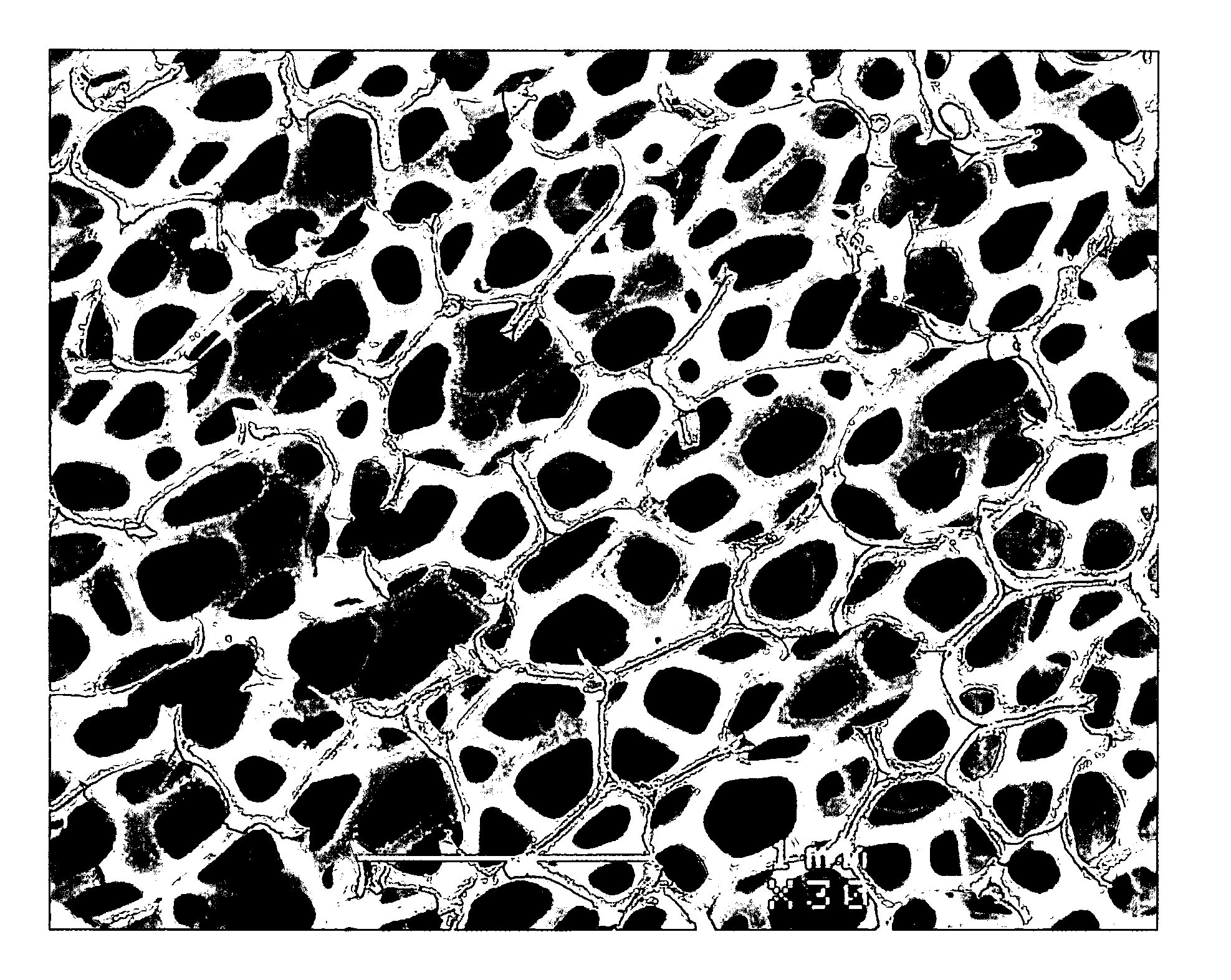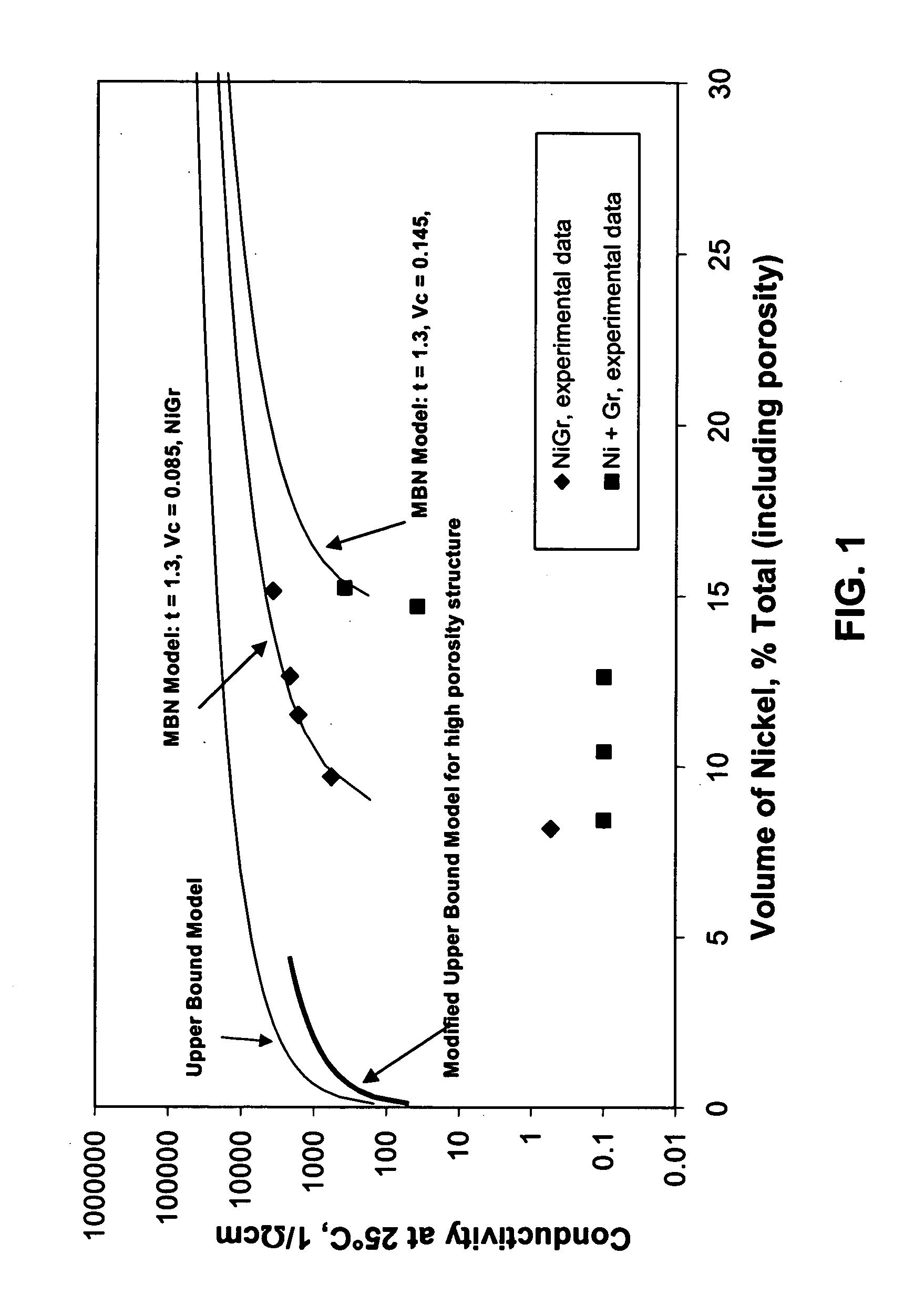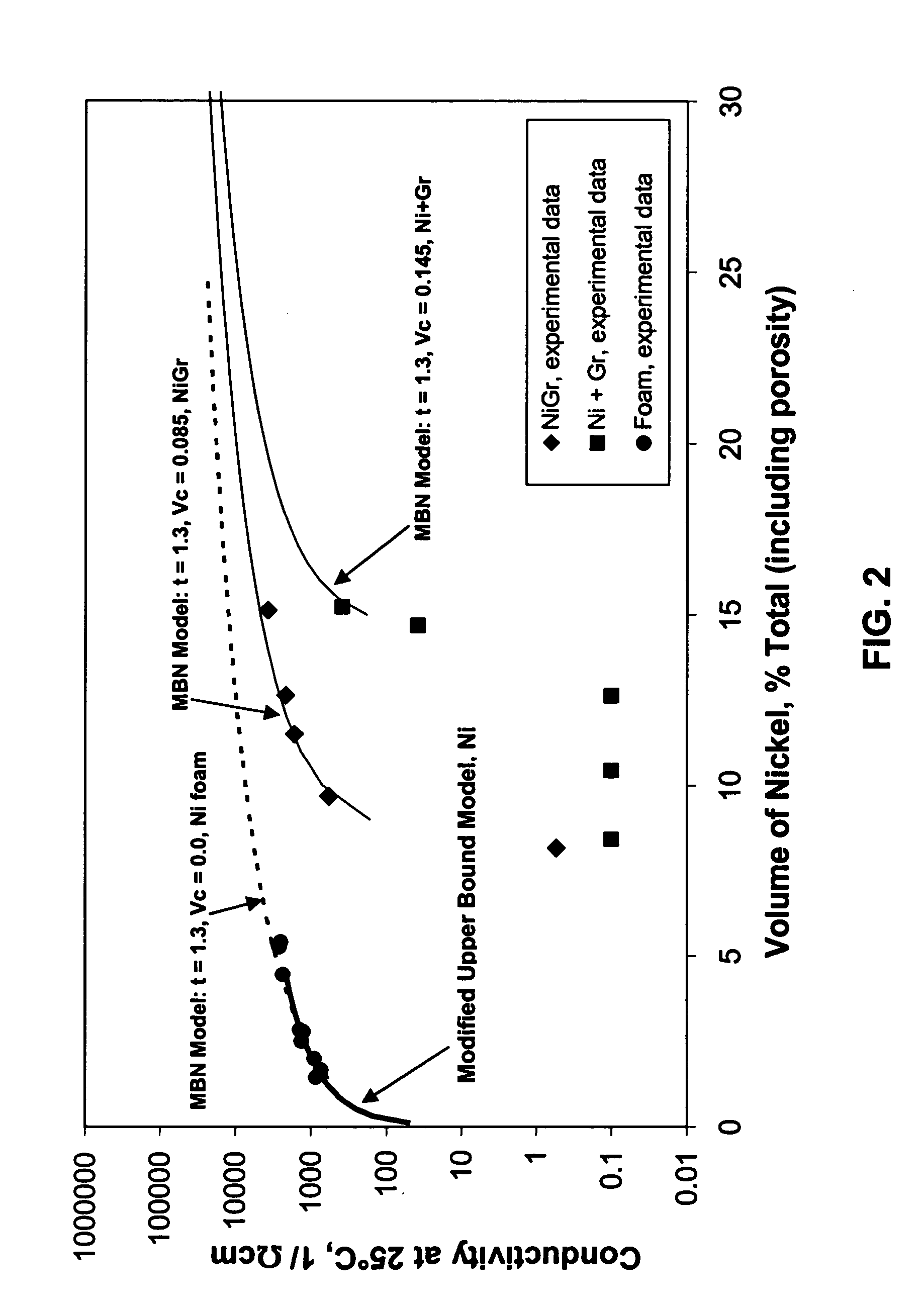Nickel foam and felt-based anode for solid oxide fuel cells
a fuel cell and foam technology, applied in the field of solid oxide fuel cell electrodes, can solve the problems of increasing the cost of nickel, although a relatively low cost base metal, reducing the efficacy of sofc, etc., and achieve the effect of reducing the quantity of nickel contained and high electrical conductivity
- Summary
- Abstract
- Description
- Claims
- Application Information
AI Technical Summary
Benefits of technology
Problems solved by technology
Method used
Image
Examples
example 1
Pasting, Drying, and Compression Process
[0069] The nickel foam used in this example was produced by Inco Limited at its Clydach nickel refinery in Wales, UK using metal carbonyl technology. The density of this foam has a nominal value measured as 600 g / m2. The nominal thickness of the nickel foam is 1.9 mm. The foam was cut to 5 cm by 6 cm coupons. The first coupon was pre-compressed to 0.98 mm, and the second and third coupons were slightly compressed to 1.80 mm and 1.74 mm, respectively. The nominal nickel volume fraction in the original foam is 3.5%. In the pre-compressed coupons, the nickel volume fraction is 3.7%, 3.9%, and 6.6% for coupons of 1.80 mm, 1.74 mm, and 0.98 mm thick, respectively. Nickel foam can be made by carbonyl technology with initial nickel volume fraction from about 1.5% to 30% or higher and it can also easily be adjusted by any compression process as noted above.
Preparation of Anodes #1˜6:
[0070] Slurry containing 30 g YSZ powder, 15 g 1.173 / wt % polyvin...
example 2
Conductivity of SOFC Anode Using Nickel Foam
[0075] The nickel foam used in this example was produced at Inco Limited at its Clydach nickel refinery in Wales, UK using metal carbonyl technology. The density of this foam has a nominal value measured as 1360 g / m2. Samples with a size of 20 mm by 10 mm with an average thickness of 2.46 mm were cut from large sheets of the nickel foam and weighed. These samples were used to prepare the foam-based Ni / YSZ composites and to measure electrical conductivity. Some cut foam pieces were not pasted with YSZ so that comparative conductivity measurements could be made. A selection of the cut foam pieces were placed in a small container that contained 8 mole % Y2O3 stabilized ZrO2 (YSZ) ceramic powder in an alcohol suspension. The foam was soaked in this thick powder suspension for 1 to 2 minutes, removed and allowed to air dry for 1 to 2 minutes. After drying, the excess YSZ powder on the surface of the foam was removed and the sample weighed.
[00...
example 3
Coefficient of Thermal Expansion of SOFC Anodes Made Using Nickel Foam
[0087] The nickel foam used in this example was produced by Inco Limited at its Clydach nickel refinery in Wales, UK using metal carbonyl technology. The density of this foam has a nominal value measured as 1360 g / m2. Samples with a size of 8 mm by 6 mm with an average thickness of 2.46 mm were cut from large sheets of the nickel foam and weighed. These samples were used to prepare the foam-based Ni / YSZ / composites and to measure the coefficient of thermal expansion. A selection of the cut foam pieces were placed in a small container and 8 mole % Y2O3 stabilized ZrO2 (YSZ) ceramic powder placed on top of the foam. This powder was then washed into the internal foam structure using alcohol. Once a sufficient amount of YSZ was washed into the foam (approximately 65 vol % on a solids basis) samples were removed from the container and air dried for 1 to 2 minutes. After drying, samples were weighed.
[0088] Four of thes...
PUM
| Property | Measurement | Unit |
|---|---|---|
| volume fraction | aaaaa | aaaaa |
| volume fraction | aaaaa | aaaaa |
| volume fraction | aaaaa | aaaaa |
Abstract
Description
Claims
Application Information
 Login to View More
Login to View More - R&D
- Intellectual Property
- Life Sciences
- Materials
- Tech Scout
- Unparalleled Data Quality
- Higher Quality Content
- 60% Fewer Hallucinations
Browse by: Latest US Patents, China's latest patents, Technical Efficacy Thesaurus, Application Domain, Technology Topic, Popular Technical Reports.
© 2025 PatSnap. All rights reserved.Legal|Privacy policy|Modern Slavery Act Transparency Statement|Sitemap|About US| Contact US: help@patsnap.com



